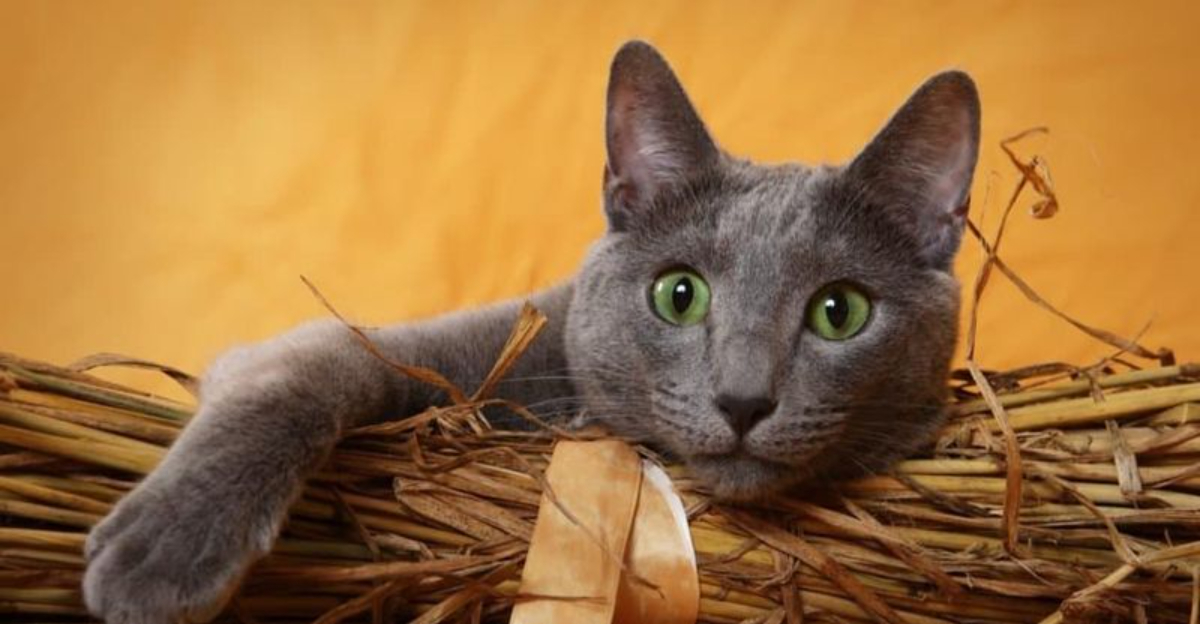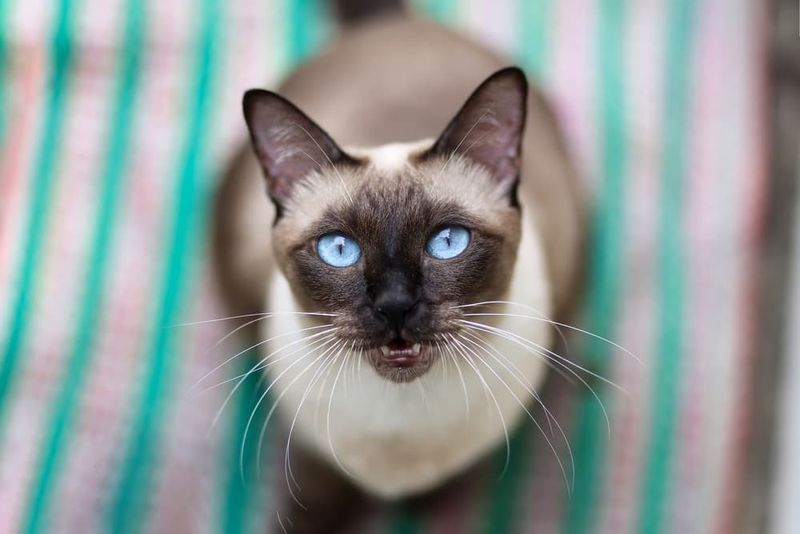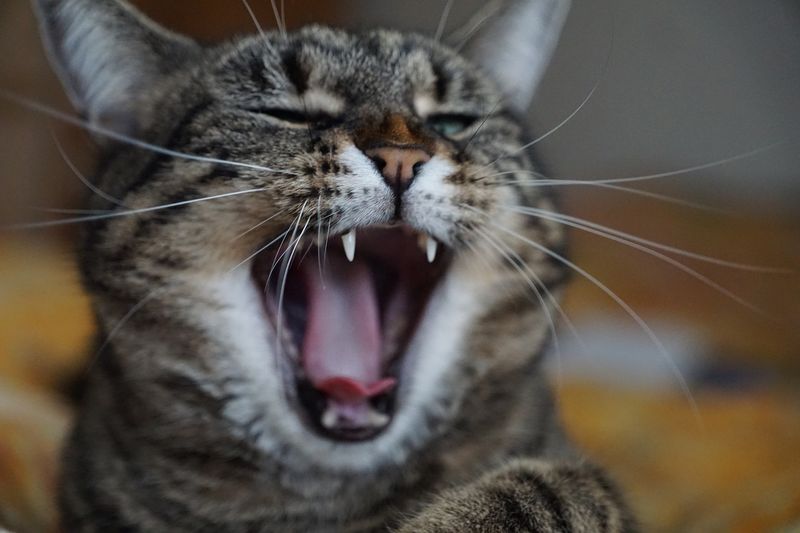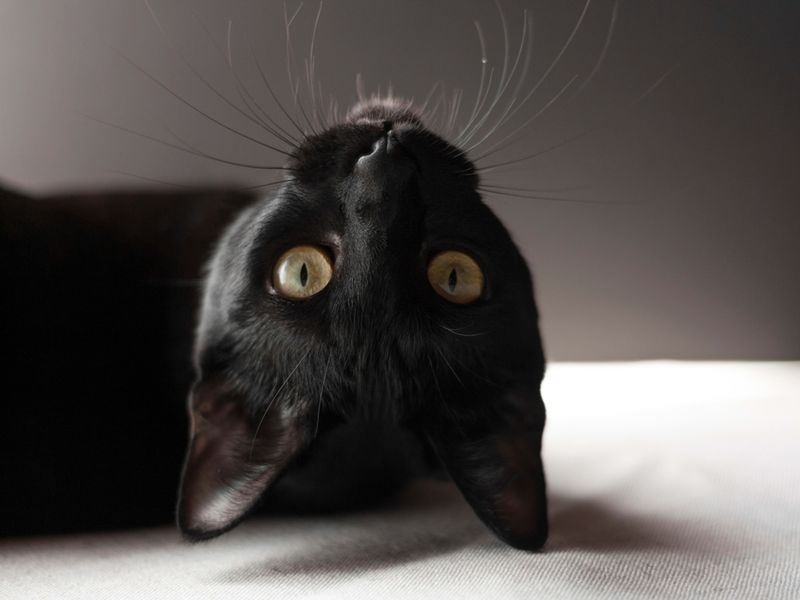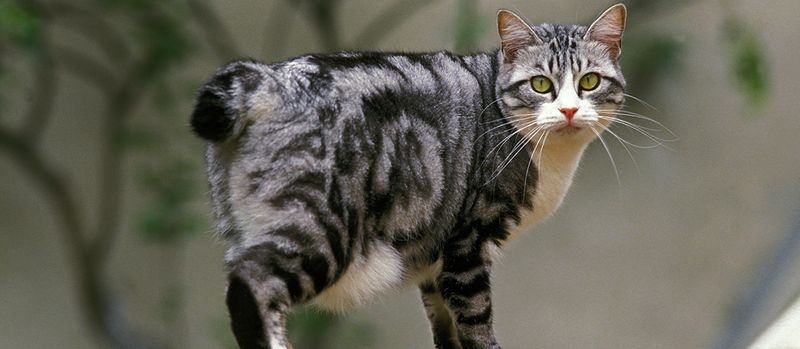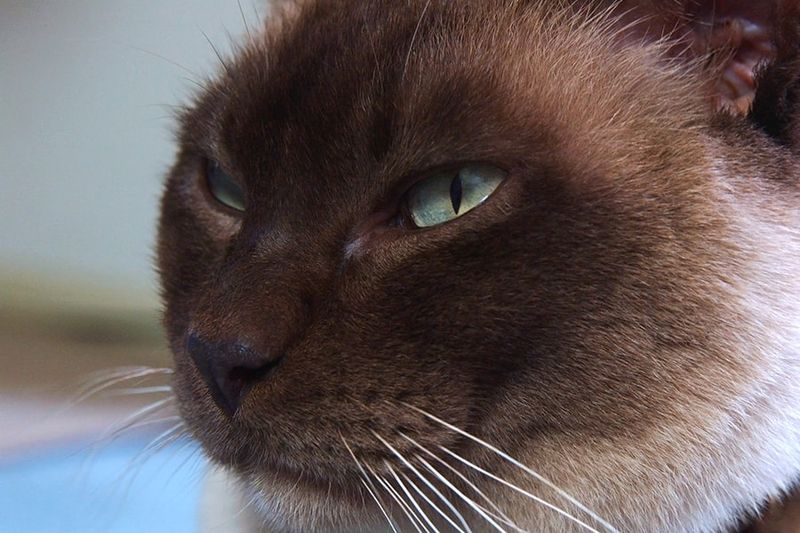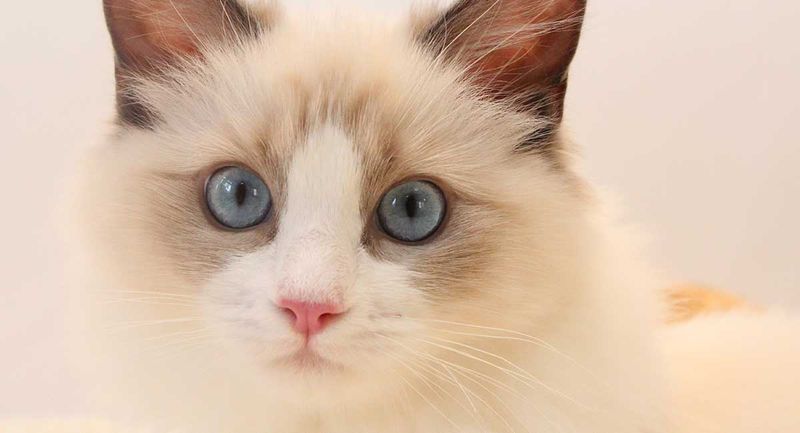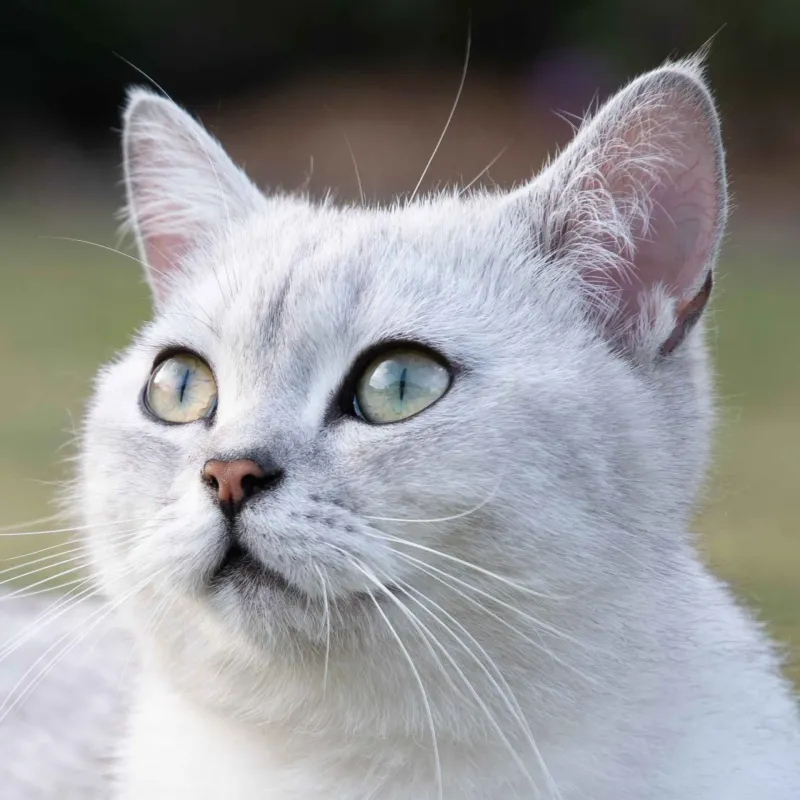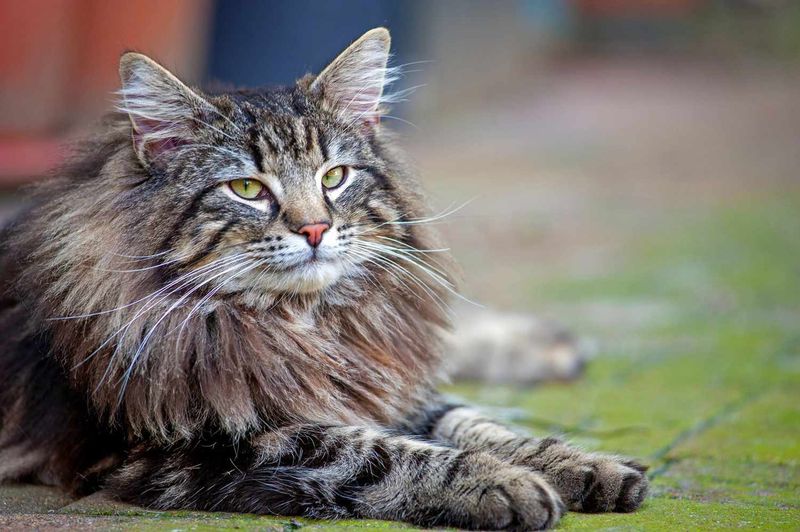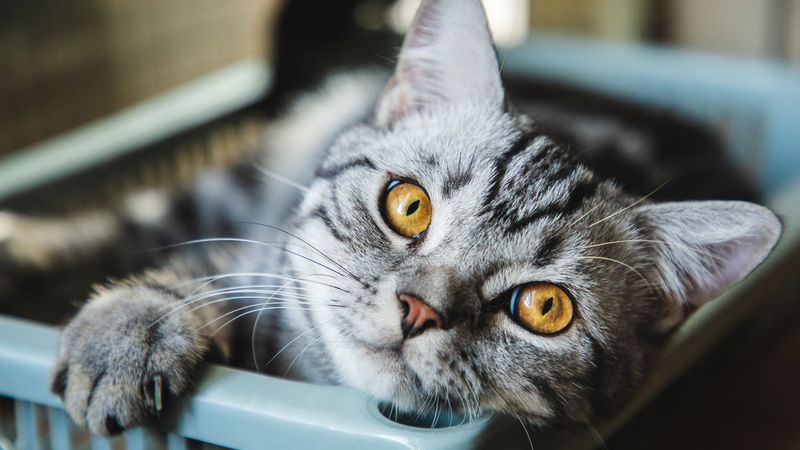📖 Table of Content:
Cats communicate in subtle and sometimes surprising ways, especially when displeased. From flicking tails to narrowed eyes, their body language often speaks louder than words. Each behavior is a clue to how they feel about their environment and the people in it.
Some cats are vocal drama queens, using meows, growls, or even yowls to express every irritation. These expressive felines won’t hesitate to let others know when something’s not to their liking. Whether it’s a delayed meal or an unwelcome guest, their complaints come through loud and clear.
Others take a quieter approach, choosing silence over sound when annoyed or stressed. These cats may simply disappear, avoid contact, or give a cold stare instead of vocal protests. Knowing whether a cat is the loud complainer or the silent sulker can make it easier to recognize their moods and meet their emotional needs.
1. Siamese
Known for their striking blue eyes and color-point coats, Siamese cats are legendary talkers. They won’t just meow—they’ll hold entire conversations with you when displeased about an empty food bowl or closed door.
Siamese cats developed their vocal traits in ancient Siam (now Thailand), where they served as royal companions. Their distinctive yowls can sound almost like a crying baby!
When a Siamese is unhappy, there’s no mistaking it. They’ll follow you around, stare intensely, and vocalize their complaints until you address whatever’s bothering them.
2. Bengal
Bengals bring wild energy and wild voices to domestic living. These spotted beauties have a wide vocal range, from chirps and trills to loud, demanding yowls when they feel ignored or restricted.
Their wild ancestry (Asian leopard cat) contributes to their expressive nature. Bengals particularly hate being left alone or denied playtime, and they’ll make their feelings crystal clear.
A displeased Bengal might pace anxiously while vocalizing or fixate on you with intense stares between complaint sessions. Their athletic bodies and loud voices make quite the impression when they’re in protest mode.
3. Oriental Shorthair
Related to Siamese, Oriental Shorthairs take vocal communication to artistic levels. These slender, big-eared cats possess one of the most extensive vocal repertoires in the feline world.
Orientals form strong bonds with their humans and expect constant interaction. When dissatisfied, they’ll employ a range of sounds from soft mutters to ear-piercing yowls that can wake the entire house.
Their expressiveness isn’t limited to sound—they’ll use dramatic body language alongside their vocals. An unhappy Oriental might drape themselves pathetically across furniture while complaining loudly about whatever minor inconvenience has disrupted their day.
4. Tonkinese
A mix of Siamese expressiveness and Burmese affection, Tonkinese cats are vocal companions with strong opinions. Their smooth, musical voices often fill the room when they want attention or aren’t pleased. These athletic cats make sure they’re heard loud and clear.
Unlike some vocal breeds that sound harsh, Tonkinese complaints often have a musical quality. They’re particularly vocal during mealtime delays or when they want attention but aren’t receiving it.
Social and intelligent, Tonkinese cats hate being ignored. They’ll position themselves directly in your line of vision while delivering their complaints, making it nearly impossible to miss their point.
5. Japanese Bobtail
Japanese Bobtails carry centuries of cultural significance in Japan and bring a unique singing voice to the feline world. Their vocalizations sound almost like singing, with a wide range of tones and melodies.
These active, intelligent cats become particularly vocal when their routine is disrupted. Their complaints might start as soft chirps but can escalate to prolonged operatic performances if their displeasure isn’t addressed.
The distinctive bobbed tail of this breed wiggles expressively during vocal sessions, adding visual emphasis to their complaints. Japanese Bobtails are especially vocal when they feel their territory has been invaded or when playtime has been postponed.
6. Burmese
Don’t let the Burmese cat’s innocent appearance fool you—these affectionate companions come with a bold voice. Their raspy, commanding calls often emerge when things aren’t just right. Sweet but assertive, they know exactly how to get noticed.
Unlike some cats that save their vocals for special occasions, Burmese regularly use their voice to communicate needs and feelings. They’re particularly vocal when separated from their favorite humans or when dinner is late.
The Burmese complaint often has a distinctive hoarse quality that sounds almost like they’re trying to form words. Their vocalizations typically come with intense eye contact that makes it very difficult to ignore their grievances.
1. Ragdoll
With their calm personalities and subdued voices, Ragdolls embody feline tranquility. These gentle giants often melt into the arms of their humans, staying true to their name. When displeased, they typically express it through quiet withdrawal rather than dramatic outbursts.
When a Ragdoll is unhappy, they typically express it through body language rather than noise. They might quietly relocate themselves or give a soft, barely audible meow that’s easily missed if you’re not paying attention.
Their calm demeanor extends to stressful situations that would cause other cats to yowl in protest. Even at the vet’s office or during unwanted grooming, Ragdolls typically maintain their composed, quiet dignity.
2. Persian
Persians approach life with regal quietness, rarely raising their voices even when displeased. These fluffy, flat-faced aristocrats of the cat world prefer to express dissatisfaction through meaningful glances and deliberate movements.
A Persian might show annoyance by slowly walking away or finding a higher perch from which to observe the offending situation. Their complaints come in the form of soft, infrequent meows that sound almost polite compared to more vocal breeds.
Their long, luxurious coat seems to muffle their already quiet vocalizations. Persians generally reserve their rare meows for truly important matters like empty water bowls or particularly uncomfortable grooming sessions.
3. British Shorthair
True to their heritage, British Shorthairs prefer quiet dignity over dramatic displays. Their thick coats and stoic faces reflect a temperament that doesn’t rely on meowing to make a point. Displeasure is shown in silence, not sound.
When a British Shorthair is displeased, it typically communicates through subtle body language changes. They might slightly narrow their copper eyes or position their compact body away from the source of discontent.
Their characteristic smile-like expression rarely changes, even during moments of annoyance. British Shorthairs take a pragmatic approach to problems, often simply removing themselves from unpleasant situations rather than complaining about them.
4. Russian Blue
With sleek, silvery coats and calm dispositions, Russian Blues rarely resort to vocalizing their frustrations. Their reserved nature favors silent stares over dramatic protests. Displeasure is delivered with elegance rather than sound.
When something bothers a Russian Blue, they’ll typically communicate through subtle ear positions and tail movements. Their large green eyes might follow you with intensity, but their mouths remain firmly closed.
Russian Blues are particularly sensitive to household tension but process it internally rather than adding to the noise. They might quietly retreat to a favorite hiding spot during stressful times, emerging only when the situation improves, without having made a sound about their discomfort.
5. Norwegian Forest Cat
Norwegian Forest Cats developed their hardy, independent nature in Scandinavian forests, resulting in a breed that rarely vocalizes complaints. These large, longhaired cats with tufted ears and bushy tails take most challenges in stride without protest.
Descended from wilderness survivors, Norwegian Forest Cats maintain a stoic approach to discomfort. They might simply adapt to new situations or solve problems themselves rather than calling for human assistance.
Their rare vocalizations tend to be soft chirps or trills rather than meows. Even during unpleasant experiences like bathing or grooming, these gentle giants typically endure with minimal vocal objection, making them easy companions for noise-sensitive households.
6. American Shorthair
American Shorthairs bring working-class practicality to the feline world, rarely wasting energy on unnecessary vocalizations. These sturdy, adaptable cats were valued for their mousing abilities on ships and farms, where quiet hunting was essential.
When an American Shorthair faces something unpleasant, they typically handle it with silent resilience. They might simply walk away from situations they dislike or find practical solutions without human help.
Their moderate temperament extends to their vocal tendencies. American Shorthairs save their infrequent meows for genuinely important communications, making them ideal companions for apartments or households where excessive cat chatter would be problematic.
